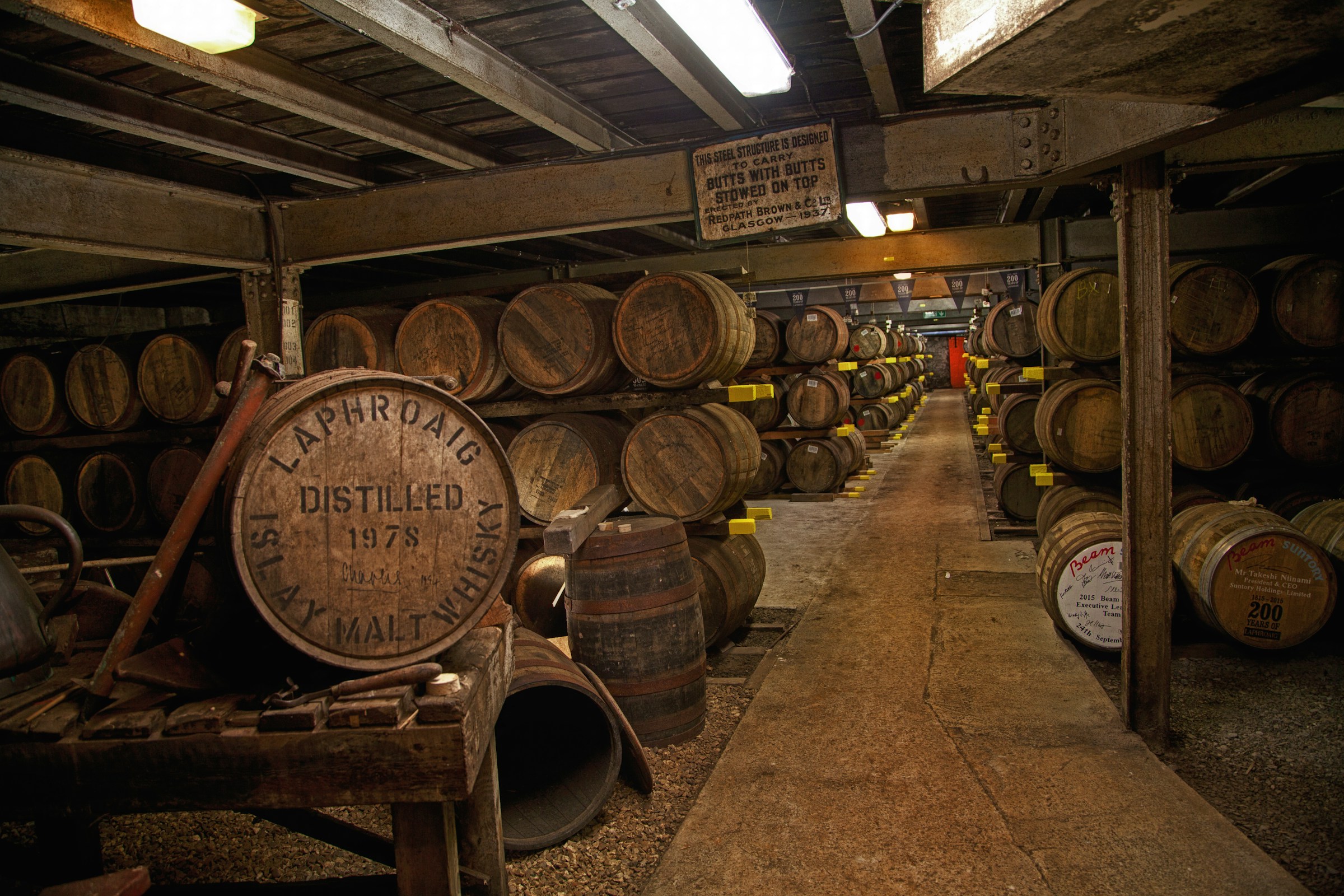Glengoyne distillery information
Founded by George Connell in 1833 using the name of Burnfoot Distillery, the Glengoyne distillery is located at Dumgoyne, a short distance out of Glasgow, and close to the famous Loch Lomond. While it’s warehouses are technically located in the Scottish Lowlands, the distillation itself happens on the Highland side of the Highland Line (the division between the Lowlands and the Highlands), thus making Glengoyne a Highland whisky. In the 19th century, the area was riddled with illicit stills as the rolling hills and lush forests provided the moonshiners who were unable to pay the steep taxes on spirit production with excellent cover against the law.
In 1876, the Lang Brothers, blenders from Glasgow purchased the distillery, from then-owners John McLelland, who himself had purchased the distillery in 1851. The Lang Brothers intended to rename the distillery to Glengoyne, but due to a clerical error, it was recorded as Glen Guin. In 1908, the distillery officially switched to the name Glengoyne (taking the name from “Glen guin”, or “Glen of the wild geese”). In 1910, Glengoyne was the first distillery to close its floor maltings.
The Lang Brothers remained in control of the distillery until they were taken over by the Robertson & Baxter group (who later would become part of the Edrington group, owners of The Macallan and partial owners of Highland Park) in 1965. The change in ownership promptly was followed by a rebuild n 1966, during which an additional sprit still was installed. At the same time, heating for the stills was switched to steam. In 1984, the Lang Brothers became suppliers of whisky to the then Queen Mother.
In April 2003, Ian Macleod Distillers Ltd acquired Glengoyne Distillery, and the Lang blended whiskies from the Edrington Group. The Royal Warrant followed with it, and has been featured on all Glengoyne products. Ian Macleod Distilleries actually used to be in the blending and bottling industry, so the acquisition of Glengoyne actually was the first real experience with distillation they would get. Keeping that in mind, the quick rate at which they managed to increase production at the distillery is all the more surprising (and impressive). At the same time, the quality of the product increased substantially.
Glengoyne whisky
Glengoyne prides itself on taking things slow, particularly the distillation process. The spirit isn’t distilled, but rather “nursed” through the stills, in order to ensure a light and sweet product. No peat is used in the distillation process nor kilning (which is done using hot air).
The core range consists of:
- 10 Year Old
- 12 Year Old; matured in Sherry casks
- Cask Strength; bottled at 58.7% ABV
- 15 Year Old; matured in Sherry casks
- 18 Year Old; mostlymatured in first-fill Sherry casks
- 21 Year Old; matured in Sherry casks
- 25 Year Old
There’s also a limited range available:
- 35 Year Old; distilled in the 1970’s. Limited to 500 bottles
- The Teapot Dram 3; cask-strength, bottled at 59.4% ABV
Finally, there’s the Travel Retail Exclusives:
- 15 Years Old Distiller’s Gold; matured in Sherry casks.
- 25 Years Old The First Till; matured in first-fill Sherry casks
Distillery info:
| Name | Glengoyne |
| Region | Highland |
| Logo |  |
| Status | Active |
| Founded | 1833 |
| Water source | Glengoyne Burn |
| Owned by | Ian Macleod Distillers Ltd |
| Address |
Glengoyne Distillery +44 (0) 1360 550254 |
| Visitor centre | Yes |
| Website | http://www.glengoyne.com/ |
| http://twitter.com/#!/glengoyne | |
| http://www.facebook.com/GlengoyneSingleMalt | |
| Community | The Glengoyne Familt |
| Map |
Distillery Setup:
Component |
Capacity |
Quantity |
|---|---|---|
| Mash tun | 3.72 tonnes | 1 |
| Washback | washback_c litres | 6 (Oregon pine) |
| Wash still | 16,520 litres | 1 |
| Spirit Still | 5,000 litres | 2 |
| Expected yearly output in LPA (Litres of pure alcohol) | 1,100,000 |
